Factors of 24 - Definition, Examples, Quiz, FAQ, Trivia
Learn about factors, prime factorization, and factor pairs with visual examples and practice activities
What Are Factors?
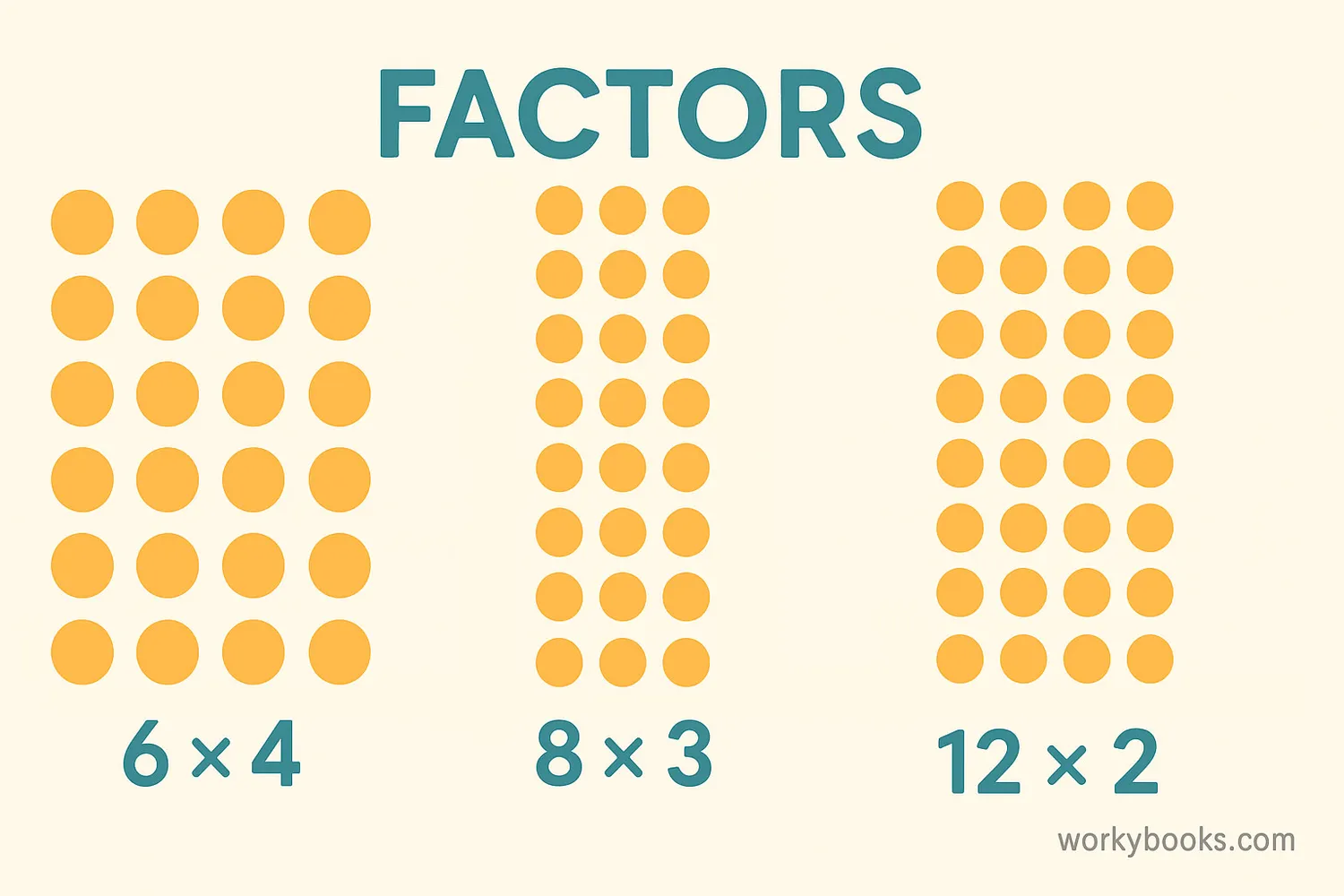
Factors are numbers that divide evenly into another number without leaving a remainder. Think of them as numbers that multiply together to make the original number.
For example, the factors of 12 are 1, 2, 3, 4, 6, and 12 because:
1 × 12 = 12
2 × 6 = 12
3 × 4 = 12
Factors are always whole numbers (no fractions or decimals). Every number has at least two factors: 1 and itself.
Key Concept
If A × B = C, then both A and B are factors of C. For example, 3 × 8 = 24, so 3 and 8 are factors of 24.
Factors of 24
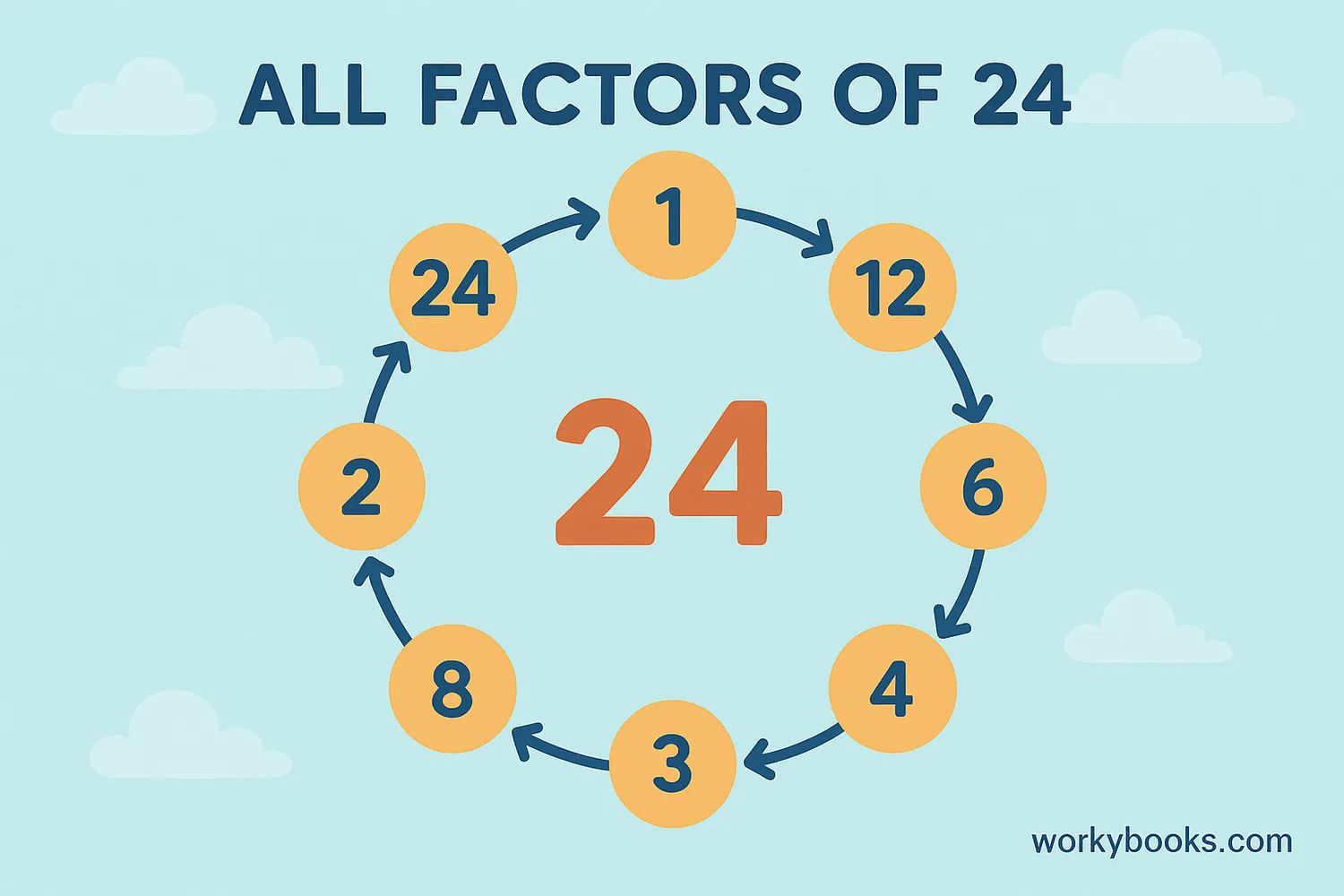
Let's find all the factors of 24. These are the numbers that divide 24 evenly:
So the complete list of factors of 24 is: 1, 2, 3, 4, 6, 8, 12, and 24.
Notice that we stop when we reach the factor pair that repeats (4 and 6). This helps us find all factors without duplicates.
Remember
24 is a composite number because it has more than two factors. Prime numbers only have two factors: 1 and themselves.
How to Find Factors of 24
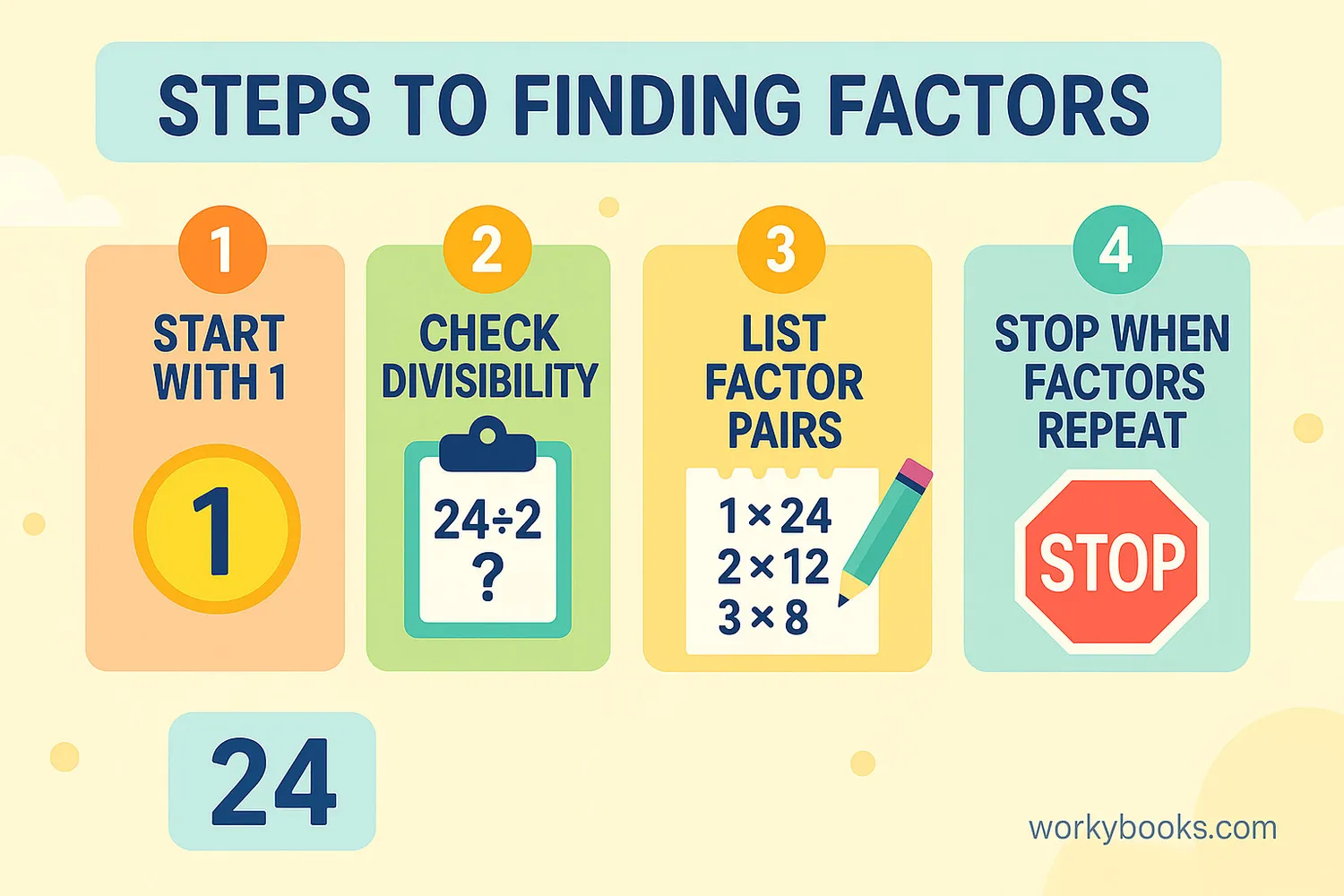
There are two main methods to find factors:
1. Multiplication Method:
Find pairs of numbers that multiply to 24:
1 × 24 = 24
2 × 12 = 24
3 × 8 = 24
4 × 6 = 24
2. Division Method:
Divide 24 by numbers starting from 1. If the division has no remainder, that number is a factor:
24 ÷ 1 = 24 (so 1 and 24 are factors)
24 ÷ 2 = 12 (so 2 and 12 are factors)
24 ÷ 3 = 8 (so 3 and 8 are factors)
24 ÷ 4 = 6 (so 4 and 6 are factors)
24 ÷ 5 = 4.8 (not whole, so 5 is not a factor)
We stop when we reach numbers that would repeat factor pairs we already have.
Tip
To check if a number is a factor, see if it divides evenly with no remainder. For example, 24 ÷ 3 = 8 with no remainder, so 3 is a factor.
Prime Factors of 24
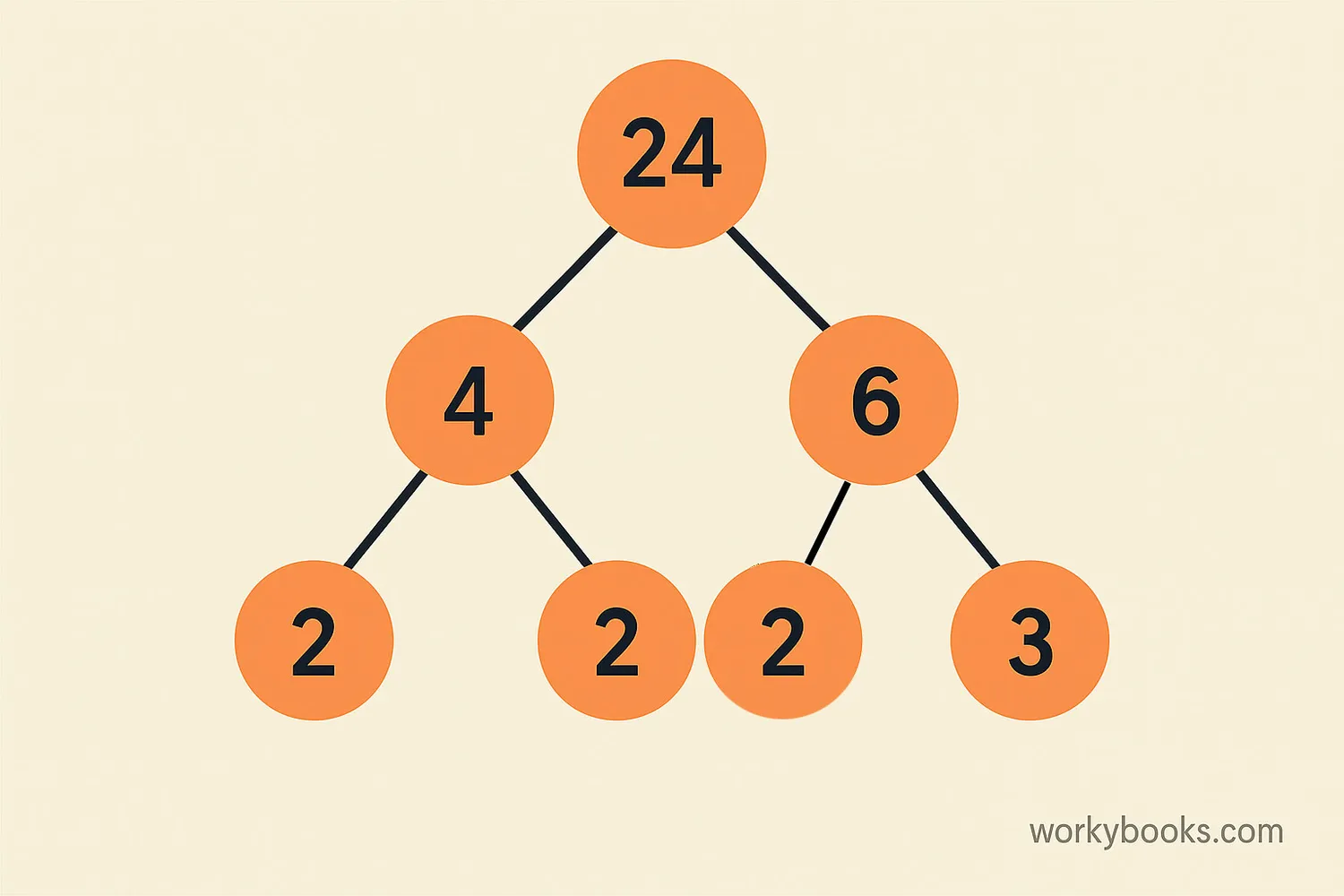
Prime factors are the prime numbers that multiply together to make the original number. Prime numbers are numbers greater than 1 that have only two factors: 1 and themselves.
Let's find the prime factors of 24 using a factor tree:
The prime factors of 24 are 2 and 3. We write this as:
Prime Factorization
or using exponents: 24 = 23 × 3
Factor Pairs of 24
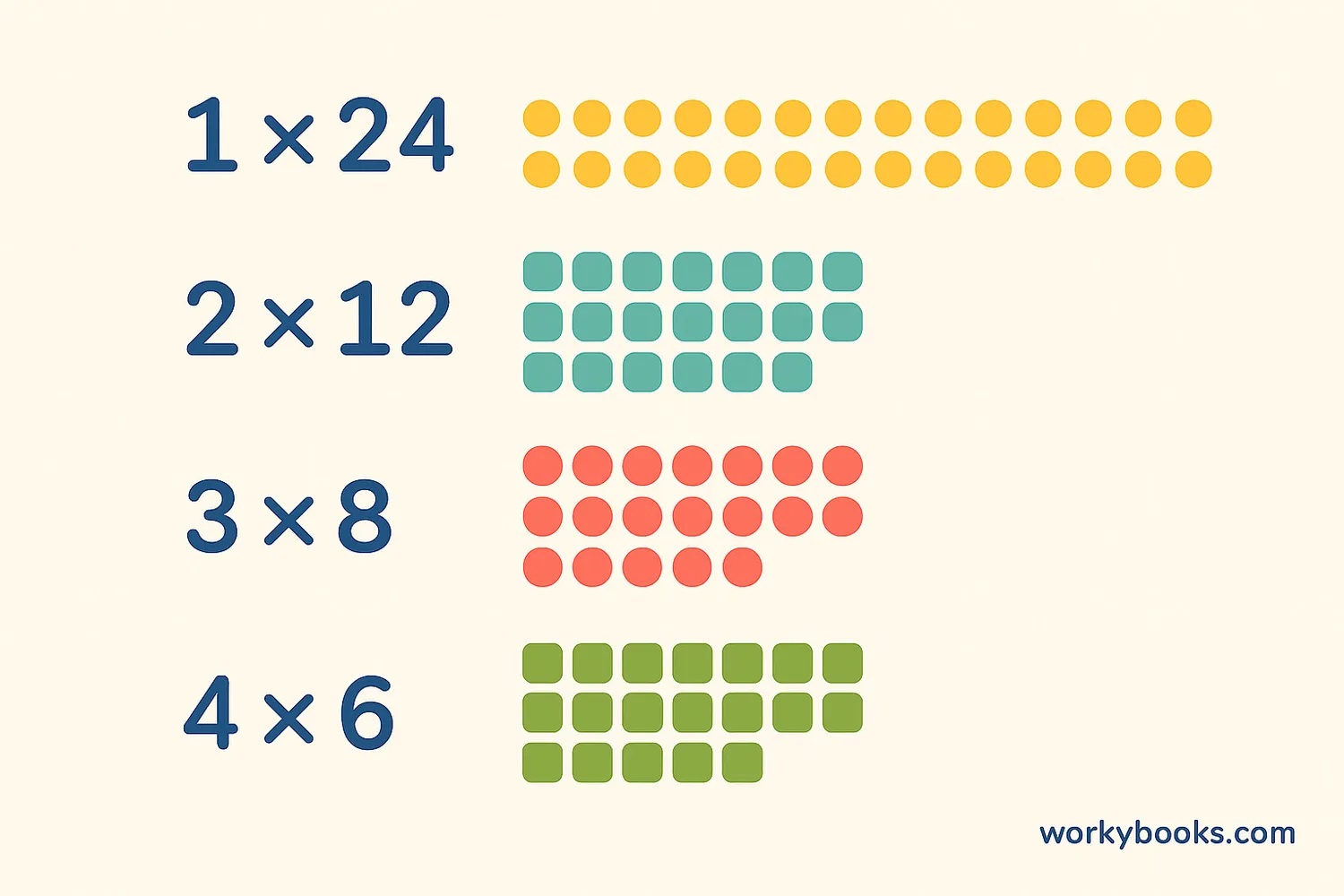
Factor pairs are two numbers that multiply together to make the original number. For 24, we have four positive factor pairs:
We also have negative factor pairs because two negative numbers multiplied together give a positive number:
(-1) × (-24) = 24
(-2) × (-12) = 24
(-3) × (-8) = 24
(-4) × (-6) = 24
So the complete set of factor pairs includes both positive and negative pairs.
Remember
Factor pairs are always listed from smallest to largest. For 24, we have four positive factor pairs and four negative factor pairs.
Factors of 24 Quiz
Test your knowledge with this 5-question quiz. Choose the correct answer for each question.
Frequently Asked Questions
Here are answers to common questions about factors of 24:
Math Trivia
Discover interesting facts about factors and the number 24:
Ancient Number Significance
The number 24 has been significant in many cultures. There are 24 hours in a day, 24 elders in the Book of Revelation, and 24 letters in the Greek alphabet.
Highly Composite
24 is a highly composite number, meaning it has more factors than any smaller number. It has 8 factors, which is more than any number smaller than 24.
Mathematical Properties
24 is the smallest number with exactly eight divisors. It's also the factorial of 4 (4! = 4×3×2×1 = 24) and the sum of twin primes (11 + 13).
In Games
In chess, the total number of possible knight moves from any position on an empty board ranges from 2 to 8, except for positions near the edge. The maximum number of possible moves is 8, and 24 is 3 times 8!





